What makes an artist Israeli? This is a question I found myself trying to answer after visiting the group exhibition currently on display at Julie M. Gallery, simply titled, Contemporary Israeli Art. Does the artist have to be born and/or reside in Israel? This exhibition would suggest not, as roughly half the artists presented in the show do not fulfill one (and in some cases both) of these prerequisites. Miriam Cabessa is a testament to this fact. Born in Casablanca, Morocco and currently residing in New York, her painting Homage for Turner is the cover image for the exhibition on the gallery’s website.
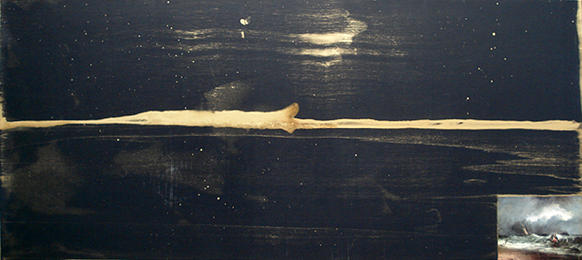 Miriam Cabessa, Homage for Turner, 2010, gold dust, oil and found image on linen, 20 x 50 inches. Courtesy of Julie M. Gallery
Miriam Cabessa, Homage for Turner, 2010, gold dust, oil and found image on linen, 20 x 50 inches. Courtesy of Julie M. Gallery
So then what else might help classify an artist as being Israeli? And what sort of exotic expectations might a viewer anticipate in an exhibition of “Israelness?” Certainly some may expect much of the art to address political and/or religious themes, an unfortunate reality due to the Western media’s portrayal of Israel as a State tangled in constant conflict. Julie M.’s exhibition undoubtedly features artworks addressing such themes, perhaps best exemplified by Eran Shakine’s Christian, Muslim and a Jew, And the Finger of God. The painting features three figures (purportedly a Christian, Muslim and Jew) standing at the base of a mountain beneath the pointed finger of God. Shakine’s motivations are clear; his artist statement begins with “Life is not easy, especially when you are living in a conflict zone like the Middle East” and ends with an anecdote about the endlessness of war.
 Eran Shakine, Christian, Muslim and a Jew, And the Finger of God, acrylic on canvas, 40 x 39 inches. Courtesy of Julie M. Gallery
Eran Shakine, Christian, Muslim and a Jew, And the Finger of God, acrylic on canvas, 40 x 39 inches. Courtesy of Julie M. Gallery
Other artists presented in the exhibition deal with similar themes. Yehuda Porbuchrai’s Flag is a patriotic layering of dripped, thrown and smudged black and white paint and Alma Shneor’s War harkens back memories of recent katusha rocket attacks in Northern Israel.
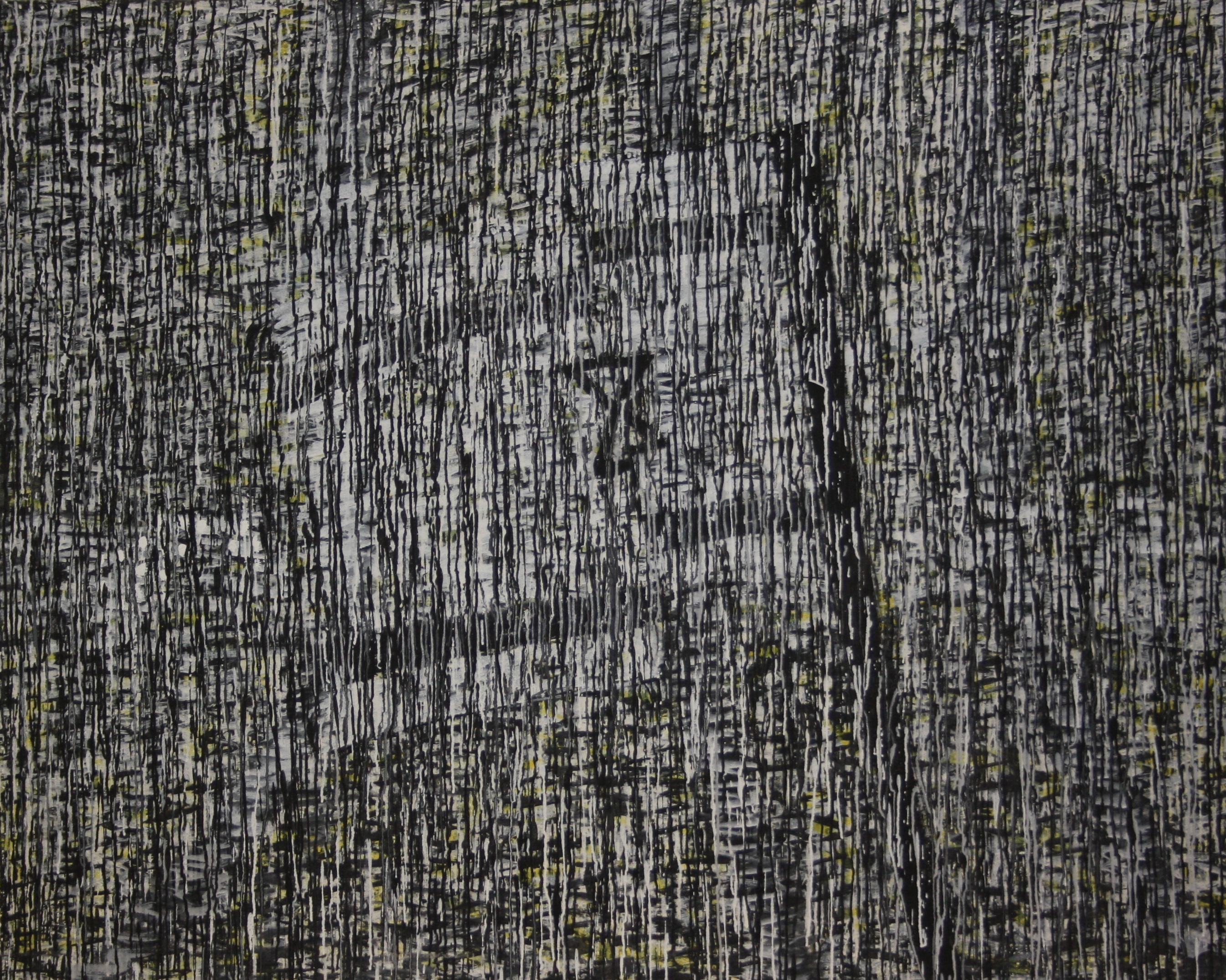 Yehuda Porbuchrai, Flag, acrylic on canvas, 55 x 69 inches. Courtesy of Julie M. Gallery
Yehuda Porbuchrai, Flag, acrylic on canvas, 55 x 69 inches. Courtesy of Julie M. Gallery
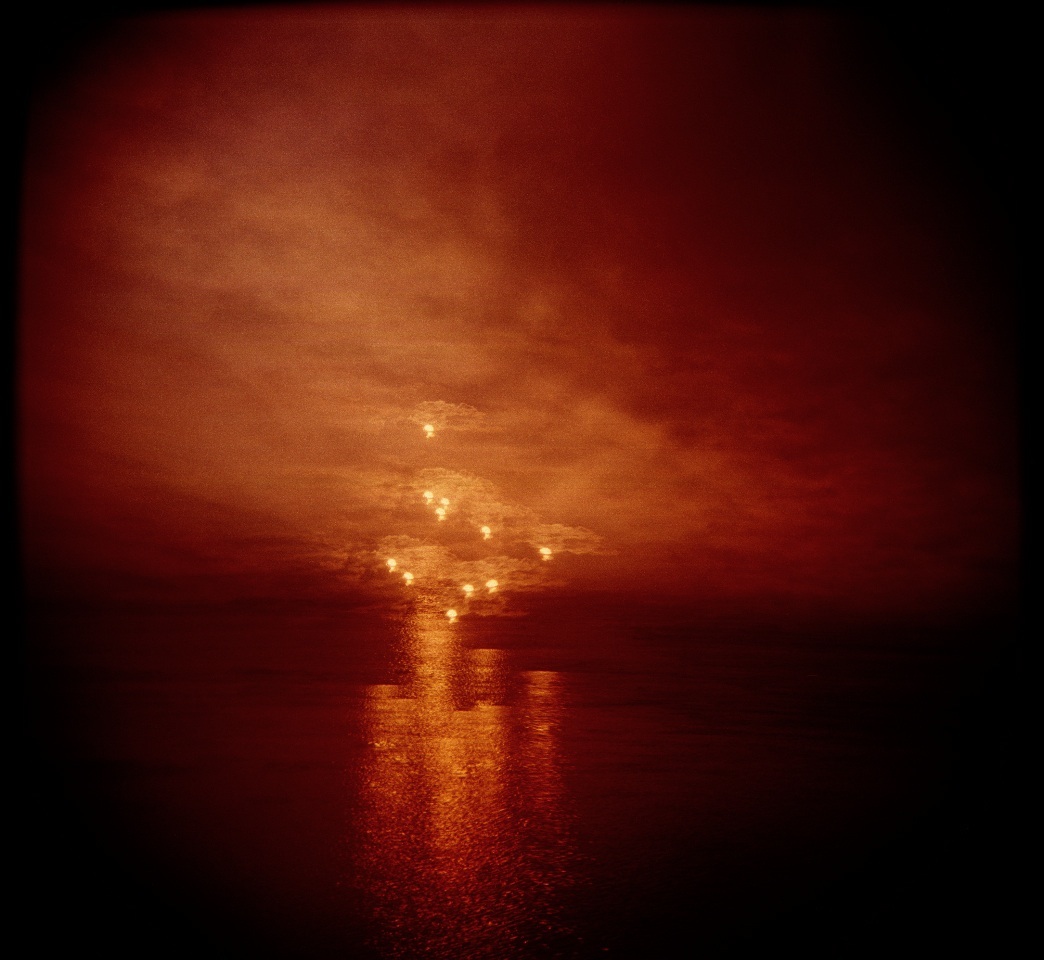 Alma Shneor, War, 2007, C-print, 43 x 47 inches. Courtesy of Julie M. Gallery
Alma Shneor, War, 2007, C-print, 43 x 47 inches. Courtesy of Julie M. Gallery
Yet despite the prevalence of such themes in these works, the majority of artwork displayed in the exhibition addresses ideas and motifs of a completely different nature. Deganit Berest is interested in liminality and the threshold between reality and the digital world. Part of the series entitled “Sea Level,” Boy Reclining aims to address this notion by causing the viewer to oscillate between perceiving seemingly meaningless geometric abstract shapes and a distinctly viewable image of a reclining figure.
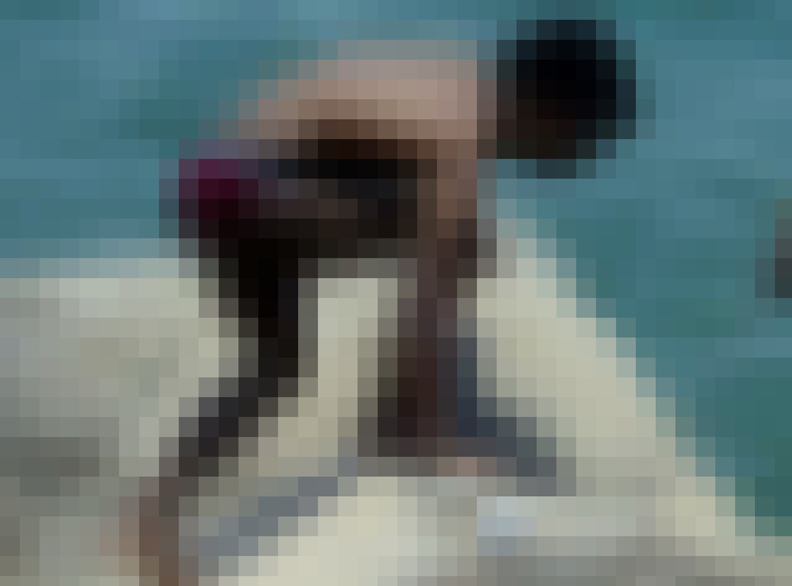 Deganit Berest, Boy Reclining, 2006, archival inkjet print, 43 x 57 inches. Courtesy of Julie M. Gallery
Deganit Berest, Boy Reclining, 2006, archival inkjet print, 43 x 57 inches. Courtesy of Julie M. Gallery
Also exhibited in Contemporary Israeli Art is Itomar Jobani, whose topographical sculptures offer a distinct depiction of the human body. Jobani says the encounter between the human body and topographical model completes the circle and enables him to speak about man as earth and earth as man.
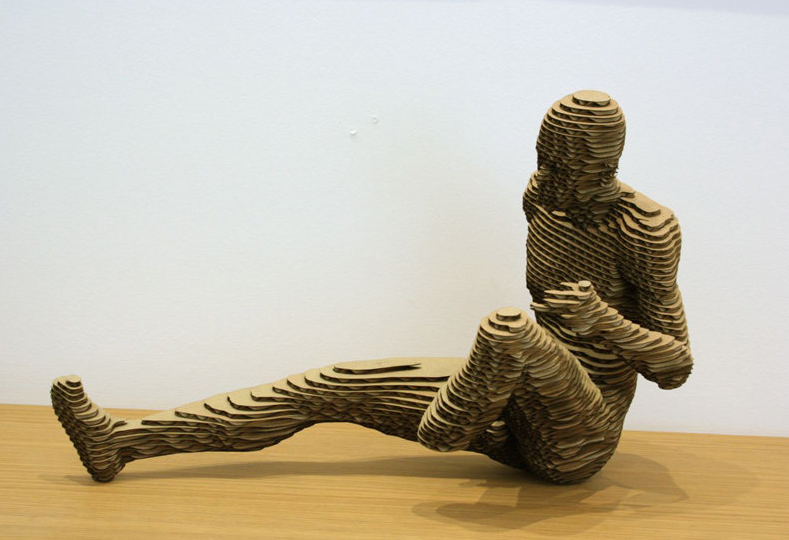 Itomar Jobani, Invalid Topography, 2007, corrugated cardboard. Courtesy of Julie M. Gallery
Itomar Jobani, Invalid Topography, 2007, corrugated cardboard. Courtesy of Julie M. Gallery
So in returning to the question “What makes an artist Israeli?” the answer remains uncertain. If one is to take Julie M.’s exhibition as any indicator, it is abundantly clear that contemporary “Israeli” artists are working all around the world and are addressing a vast array of themes and ideas. Julie M. Gallery succeeds in reflecting this wide variety and not restricting itself to presenting Israeli art that addresses more typical politico-religious notions.
Mitch Billinkoff
*Exhibition dates: January 30 – March 9, 2014, Julie M. Gallery, 15 Mill Street, Distillery District. Gallery hours: Tues – Sat 11 – 6, Sun 12 – 5 p.m. Julie M. also has a gallery in Tel Aviv.
